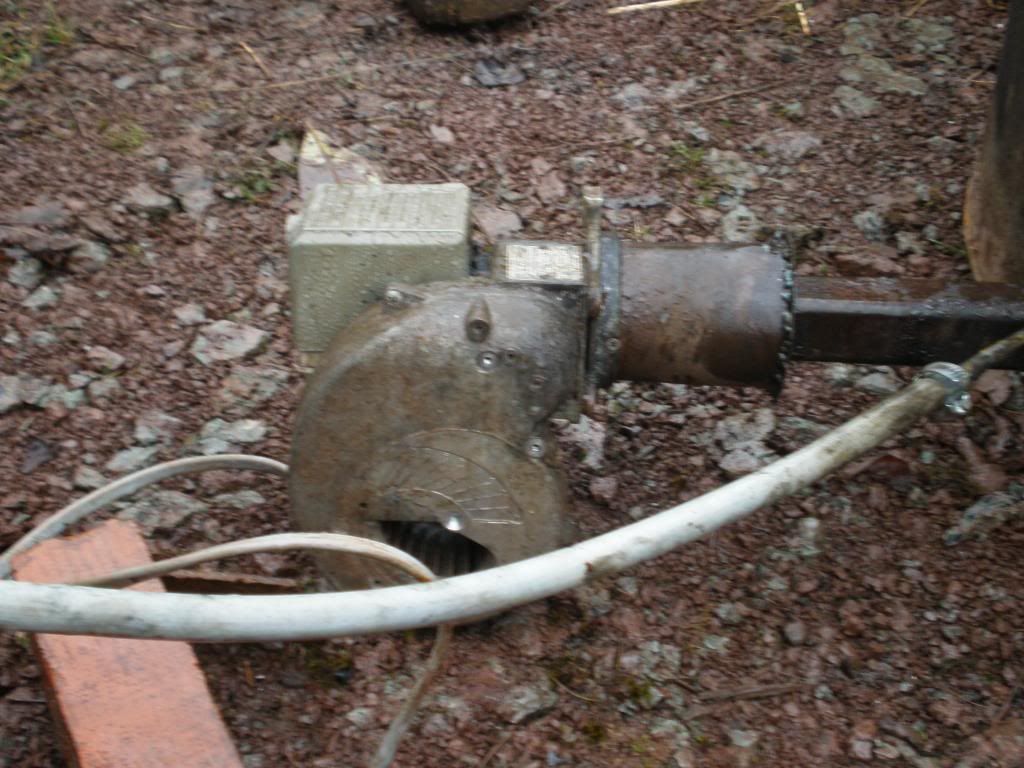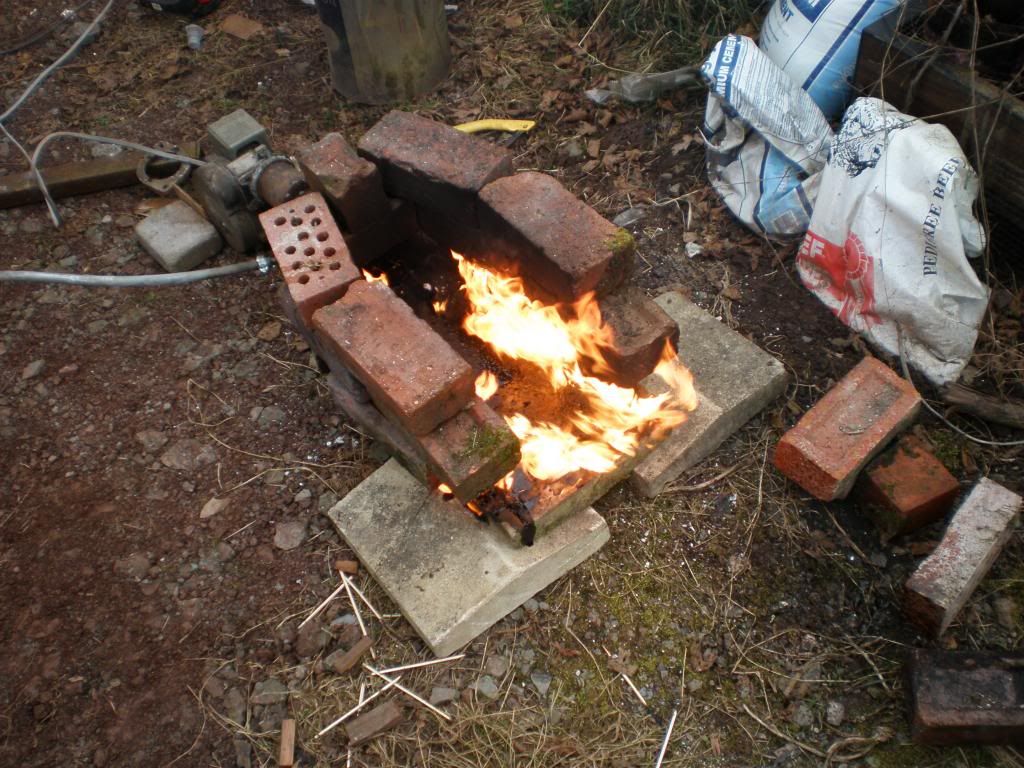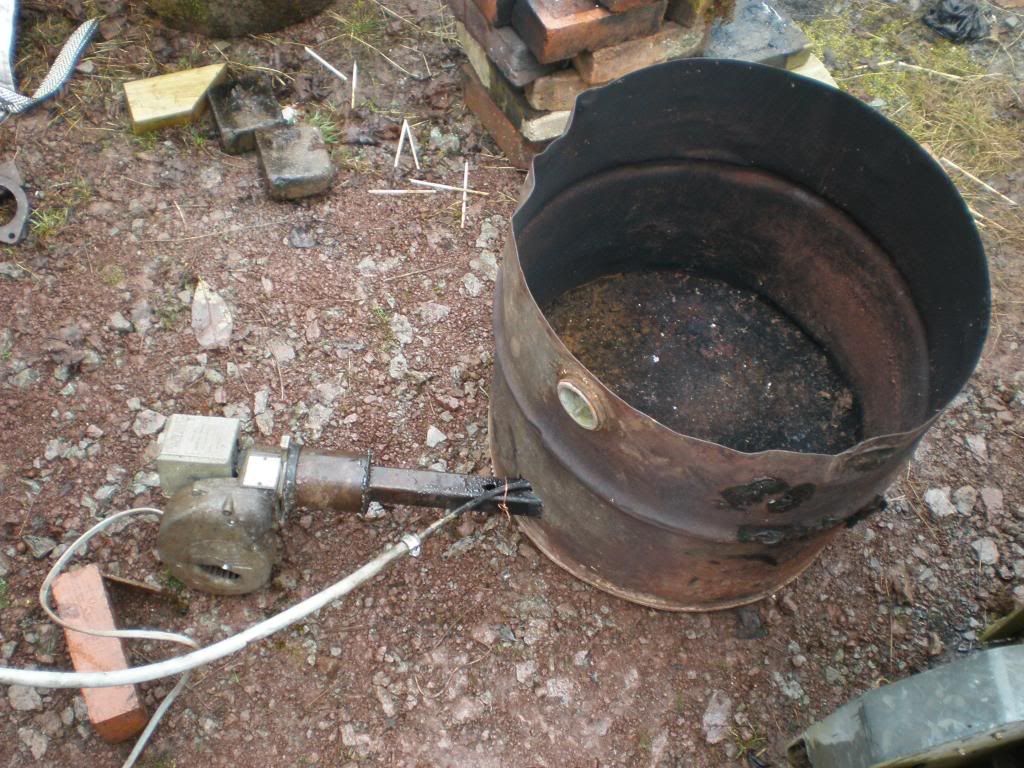This is still being built. I wanted something to gently melt solid oil, but this is not it. It is way to hot.
Fan assisted burner.

An old oil central heating burner, somewhat modifyed. The pump has been removed, and the lockout disabled. The oil jet and pipework has been removed, and the blowpipe is welded onto the shroud of the burner.

This is an experiment, just to see what I was playing with. Initially, I ran the fuel pipe down the middle of the blow pipe, but it just wasn't vapourising the fuel well enough. So I just ran the fuel pipe along the top of the blow pipe, and let it drip into the air stream. Above, the flame was controllable, and was staying in by itself.

And this is the stage it is at now. Success of a sorts, I can really see how this could get hot enough to melt non ferrous metals.
I've been starting the burn with a paintcan, with some super dry hardwood in it, lit be a fire lighter.
It takes about 10 minutes to get it going, if you get it right. Its a lot easyer to light in the drum, than on the flat. The paintcan has a slot in the bottom, and some holes drilled in it,and I position it so the oil stream shoots onto the burning embers inside. After less than two minutes, I pull the paintcan out.
To start with, there was oil burning on the floor of the drum, then it started to catch, and the drum was about half full with swirling smokey flame. Then it started getting more and more fierce, and after a little while the drum was full of a really steady swirling flame, going all the way back around the the blow pipe. Then it stepped up another gear, and the heat was incredible.
Now I want to put some concrete around the inside of the drum, and narrow the chamber down, and make a lid. I'll also make a more permanent job of things, its all lashed together at the moment.
I'll update this thread as I get on with the job.
Sadly I don't have a photo of it burning, I'll try and remember the camera when I light it again.